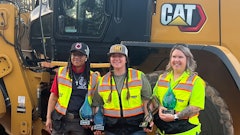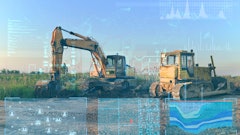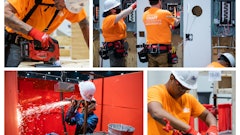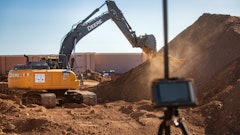
People are a company’s most important asset and that’s why it’s important to focus on them when building a strategy for your construction business. One of the most noticeable differences between companies that thrive and those that fail is usually workforce management — or a better way to say it is how contractors engage with their people.
While most people think construction workforce management is the same thing as scheduling labor, labor scheduling is only a portion of the full definition. Yes, you have to schedule your people, but workforce management means managing your roster beyond a schedule. From data management and communication, to people management and planning, it can open new doors for your people and business.
Let's break each of these areas down by what they mean for the construction industry:
- Data management: Organizing and housing all of your people and project data in a secure manner that creates time savings and new efficiencies.
- Communication: Efficiently sharing project, scheduling and additional updates on an individual or workforce-wide basis to ensure everyone stays in the know and has all of the information they need to be successful.
- People management: Ensuring your roster stays motivated, develops new skills and stays up to date on certifications so your organization can tackle any project at any given time.
- Planning: Having information you can depend on to ensure your company can forecast ahead for new projects and know when to ramp up your workforce.
When paired with labor scheduling, the elements listed above help paint the full picture of what workforce management entails.
Benefits of Digital Solutions
Your company may be doing fine, completing jobs, winning work and getting by. You’re doing what you’re supposed to do. But deep down, you know there’s something new you can bring to the plate. Other companies might be adopting new technology and evolving, and so can yours.
Digital workforce management platforms provide real-time information about people’s skills, certifications, location and more, while also communicating project updates to your entire team, or only to those who need to know. Having one source of truth you can access at your fingertips builds confidence within your organization, makes bidding for future jobs more accurate and gives you extra insight into what makes sense for your business.
Those contractors that haven’t already will need to start addressing their biggest costs and most important asset – their people. By identifying and onboarding workforce management software, they can do that and gain direct and actionable insight into their workforce.
Meeting Needs for the Future
Like many others, you want to optimize the productivity of your staff and effectively forecast labor needs for future jobs. From a basic point of view, it’s simply knowing where your people are today and where you need them in the future.
No matter the industry, workforce management can play a vital role. You can only schedule, not manage, your workforce on a spreadsheet, whiteboard or piece of paper. There’s no planning ahead, active communication or real-time information at your fingertips.
Construction companies from Slotegraaf Construction in Ontario, Canada, to P2K in Atlanta, GA, are already using digital tools to learn from the past and plan for the future and win future jobs. Companies that aren’t adopting new technology will slowly fall behind and might eventually disappear. Workforce management can help them to optimize their workforce and identify new management efficiencies in order to realize their full potential.






























